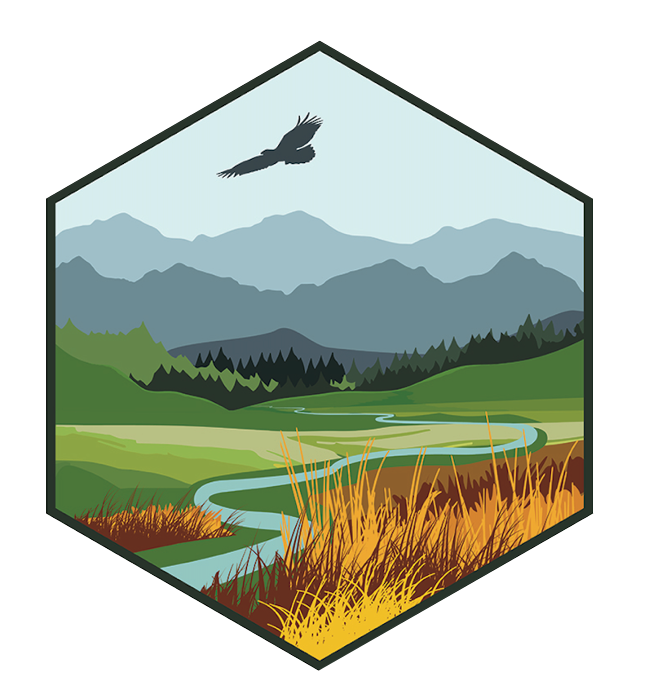Abstract (from http://onlinelibrary.wiley.com/doi/10.1002/15-1061/abstract): Weather and climate affect many ecological processes, making spatially continuous yet fine-resolution weather data desirable for ecological research and predictions. Numerous downscaled weather data sets exist, but little attempt has been made to evaluate them systematically. Here we address this shortcoming by focusing on four major questions: (1) How accurate are downscaled, gridded climate data sets in terms of temperature and precipitation estimates? (2) Are there significant regional differences in accuracy among data sets? (3) How accurate are their mean values compared with extremes? (4) Does their accuracy depend on spatial resolution? We compared eight widely used downscaled data sets that provide gridded daily weather data for recent decades across the United States. We found considerable differences among data sets and between downscaled and weather station data. Temperature is represented more accurately than precipitation, and climate averages are more accurate than weather extremes. The data set exhibiting the best agreement with station data varies among ecoregions. Surprisingly, the accuracy of the data sets does not depend on spatial resolution. Although some inherent differences among data sets and weather station data are to be expected, our findings highlight how much different interpolation methods affect downscaled weather data, even for local comparisons with nearby weather stations located inside a grid cell. More broadly, our results highlight the need for careful consideration among different available data sets in terms of which variables they describe best, where they perform best, and their resolution, when selecting a downscaled weather data set for a given ecological application.
EDDI is a drought indicator that uses atmospheric evaporative demand (E0) anomalies across a time-window of interest relative to its climatology to indicate the spatial extent and severity of drought. This page provides access to near-real-time (with a five-day latency, i.e., the most recent information is five days old) EDDI plots with time windows integrating E0 anomalies from 1 to 12 weeks and 1 to 12 months from the most current date. E0 is calculated using the Penman Monteith FAO56 reference evapotranspiration formulation driven by temperature, humidity, wind speed, and incoming solar radiation from the North American Land Data Assimilation System (NLDAS-2) dataset. For a particular time-window, EDDI is estimated by standardizing the E0 anomalies relative to the whole period of the record (1979-present), using a non-parametric method (see Hobbins et al., 2016). For plotting purposes, EDDI values are binned into different percentile categories analogous to the US Drought Monitor plots. However, in case of EDDI plots, both drought and anomalously wet categories are shown. EDDI data are available at a ~12-km resolution across CONUS since January 1, 1980, and are updated daily. EDDI has the potential to offer early warning of agricultural drought, hydrologic drought, and fire-weather risk by providing real-time information on the emergence or persistence of anomalous evaporative demand in a region. A particular strength of EDDI is in capturing the precursor signals of water stress at weekly to monthly timescales, which makes EDDI a strong tool for drought preparedness at those timescales.
The North Central Climate Science Center (NC CSC) is committed to bringing the best possible climate science to bear in order to inform decisions made by Department of the Interior (DOI) planners and other land and resource managers across the country. To help accomplish this mission, key partnerships have been established between the NC CSC and the DOI Landscape Conservation Cooperatives (LCCs) in the North Central region of the U.S. Whereas the eight Climate Science Centers have a greater emphasis on climate science delivery, the LCCs focus more generally on defining research needs for conservation, and on science and tool delivery to support conservation outcomes. In order to help connect the landscape-scale conservation activities of the LCC network with its climate science capacity, the NC CSC has worked with four regional LCCs and its University Consortium to establish liaison teams. These liaison teams focused communication efforts between LCC and NC CSC leadership to enhance development of collaborative work, integrating climate science with management needs to result in cogenerated information. These liaisons were expected to help leverage the existing efforts and expertise of the USGS, staff at the NC CSC, and the NC CSC University Consortium to more directly contribute climate science collaboration and support to priority LCC activities and topics. The objective of this collaboration was to focus on increased engagement and communication, as called for in the National Academy of Science review of the LCCs, to 1) take advantage of the LCCs’ existing and ongoing distillation of partner needs and 2) bring to bear on those needs existing NC CSC and USGS climate related science. Learn more about this collaboration and the team members here: http://nccsc.colostate.edu/meeting-stakeholder-needs
Abstract (from http://onlinelibrary.wiley.com/doi/10.1002/ecs2.1590/full): Ecohydrological responses to climate change will exhibit spatial variability and understanding the spatial pattern of ecological impacts is critical from a land management perspective. To quantify climate change impacts on spatial patterns of ecohydrology across shrub steppe ecosystems in North America, we asked the following question: How will climate change impacts on ecohydrology differ in magnitude and variability across climatic gradients, among three big sagebrush ecosystems (SB-Shrubland, SB-Steppe, SB-Montane), and among Sage-grouse Management Zones? We explored these potential changes for mid-century for RCP8.5 using a process-based water balance model (SOILWAT) for 898 big sagebrush sites using site- and scenario-specific inputs. We summarize changes in available soil water (ASW) and dry days, as these ecohydrological variables may be helpful in guiding land management decisions about where to geographically concentrate climate change mitigation and adaptation resources. Our results suggest that during spring, soils will be wetter in the future across the western United States, while soils will be drier in the summer. The magnitude of those predictions differed depending on geographic position and the ecosystem in question: Larger increases in mean daily spring ASW were expected for high-elevation SB-Montane sites and the eastern and central portions of our study area. The largest decreases in mean daily summer ASW were projected for warm, dry, mid-elevation SB-Montane sites in the central and west-central portions of our study area (decreases of up to 50%). Consistent with declining summer ASW, the number of dry days was projected to increase rangewide, but particularly for SB-Montane and SB-Steppe sites in the eastern and northern regions. Collectively, these results suggest that most sites will be drier in the future during the summer, but changes were especially large for mid- to high-elevation sites in the northern half of our study area. Drier summer conditions in high-elevation, SB-Montane sites may result in increased habitat suitability for big sagebrush, while those same changes will likely reduce habitat suitability for drier ecosystems. Our work has important implications for where land managers should prioritize resources for the conservation of North American shrub steppe plant communities and the species that depend on them.
Chapter on Adaptation for the 2014 National Climate Assessment. Adaptation refers to action to prepare for and adjust to new conditions, thereby reducing harm or taking advantage of new opportunities. Adaptation planning is occurring in the public and private sectors and at all levels of government but few measures have been implemented.
This report was submitted to the Colorado Energy Office in 2015 and was edited by Eric Gordon (University of Colorado Boulder) and Dennis Ojima (Colorado State University). It was based on a study that evaluated Colorado's climate vulnerability in the ecosystems, water, agriculture, energy, transportation, recreation/tourism, and public health sectors.
Abstract (from http://journals.plos.org/plosone/article?id=10.1371/journal.pone.0124439): Ecological niche models predict plant responses to climate change by circumscribing species distributions within a multivariate environmental framework. Most projections based on modern bioclimatic correlations imply that high-elevation species are likely to be extirpated from their current ranges as a result of rising growing-season temperatures in the coming decades. Paleoecological data spanning the last 15,000 years from the Greater Yellowstone region describe the response of vegetation to past climate variability and suggest that white pines, a taxon of special concern in the region, have been surprisingly resilient to high summer temperature and fire activity in the past. Moreover, the fossil record suggests that winter conditions and biotic interactions have been critical limiting variables for high-elevation conifers in the past and will likely be so in the future. This long-term perspective offers insights on species responses to a broader range of climate and associated ecosystem changes than can be observed at present and should be part of resource management and conservation planning for the future.
Abstract (from http://journals.ametsoc.org/doi/abs/10.1175/WCAS-D-13-00027.1): The way in which people perceive climate change risk is informed by their social interactions and cultural worldviews comprising fundamental beliefs about society and nature. Therefore, perceptions of climate change risk and vulnerability along with people’s “myths of nature”—that is, how groups of people conceptualize the way nature functions—influence the feasibility and acceptability of climate adaptation planning, policy making, and implementation. This study presents analyses of cultural worldviews that broaden the current treatments of culture and climate change mitigation and adaptation decision making in communities. The authors use insights from community-based climate research and engage the Cultural Theory of Risk conceptual framework to situate community understandings of, and responses to, climate impacts. This study looks at how the issue of climate change manifests socially in four cases in the United States and Tuvalu and how ideas about climate change are produced by the institutional cultural contexts across scales from the local to the global. This approach helps us identify local and regional priorities and support the development of new relationships for adaptation research and planning by helping to diagnose barriers to climate change adaptation, assist improved communication through framing/reframing climate issues based on shared understandings and collective learning, and help move from conflict to cooperation through better negotiation of diverse worldviews.
Abstract (from http://link.springer.com/article/10.1007/s10113-014-0585-0): Drought is a part of the normal climate variability and the life and livelihoods of the Western United States. However, drought can also be a high impact or extreme event in some cases, such as the exceptional 2002 drought that had deleterious impacts across the Western United States. Studies of long-term climate variability along with climate change projections indicate that the Western United States should expect much more severe and extended drought episodes than experienced over the last century when most modern water law and policies were developed, such as the 1922 Colorado River Compact. This paper will discuss research examining regional socio-natural climate vulnerability and adaptive response capacities to the 2002 drought in the Yampa–White Basins region of Colorado across sectors and will demonstrate how a bottom-up or “toad’s eye” approach to understanding drought is paramount to complement top-down, instrumental data-driven analyses of drought. The results of empirical observations through interviews and participant observation in combination with analysis of drought indicators will be presented. Implications for adaptation research and planning for climate variability and change will be discussed.

